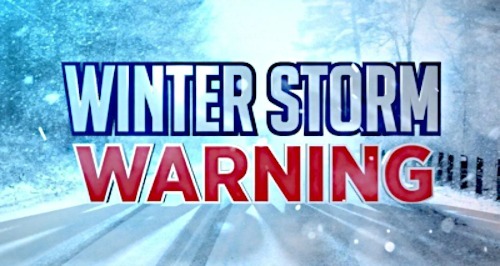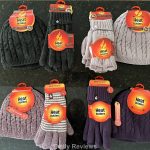This is a sponsored guest post.
Same as you, cold weather can harm your pets.
This article explains how to protect them from hypothermia and frostbite. Learn indoor and outdoor safety tips and keep your pets healthy during winter.
Recognizing Cold Weather Risks for Pets
Winter can be a magical time, but for our pets, it can also be a period fraught with dangers. One of the most critical risks is hypothermia, which occurs when a pet’s core temperature drops below 35°C.
This condition can result from prolonged exposure to very cold temperatures and causes symptoms such as shivering, lethargy, and in severe cases, can lead to serious health problems.
Pets, much like humans, can suffer greatly from the cold, and recognizing the signs of distress is crucial for their safety, especially when they experience a lower body temperature.
Another significant risk during the winter months is frostbite. Frostbite happens when deeper tissues freeze, typically affecting areas with exposed skin like the face, ears, and paws.
This condition is exacerbated by wind chill, which increases the rate of heat loss from the body, making extremely cold environments even more dangerous for people exposed to extremely low temperatures combined with wind chill, leading to tissue damage that can be quite painful.
Prolonged exposure to cold environments can cause a range of health issues for pets, including decreased body heat and overall health risks. It is essential for pet owners to be vigilant and recognize signs of distress during cold weather. Shivering, whining, or a tendency to seek warmth are all indicators that your pet may be suffering from the cold.
Awareness of these risks and proactive measures will help keep your pet stay warm and staying safe during the winter.
Keeping Pets Warm Indoors
Keeping pets warm indoors is crucial as temperatures drop. Indoor ambient temperature below 12°C can significantly strain a pet’s cardiovascular system, making it essential to maintain a warm indoor environment.
A sufficiently heated home and access to cozy, insulated spaces significantly improve your pets’ comfort and health.
Fresh, unfrozen water is vital, as cold weather can cause dehydration just as easily as hot conditions. Indoor heating can decrease humidity levels, contributing to moisture loss and potential dehydration in pets.
Pets often require more water in cold weather since they expend extra energy to maintain body temperature.
Next, we discuss specific strategies for keeping pets warm indoors: safe use of portable heaters, insulating pet spaces, and engaging indoor activities.
Use Portable Heaters Safely
Portable heaters can be invaluable during the cold months, but they must be used safely around pets. A heater designed specifically for pets can reduce the risk of overheating or fires, providing a safe source of warmth.
Creating a designated warm area for your pets with enclosed spaces can help trap warm air and retain heat more effectively, ensuring they stay comfortable and cozy.
When using portable heaters, always ensure they are stable and placed away from flammable materials to prevent accidents. It’s also important to keep heaters out of reach from pets to minimize the risk of burns or accidents.
Following these tips ensures the safe use of portable heaters to create a warm environment for your pets.
Insulating Pet Spaces
A warm sleeping area for pets is crucial during colder temperatures. Covering pet sleeping areas with blankets or thermal materials can significantly help maintain warmth.
Bubble wrap can be used as an effective insulating layer inside pet beds to help retain warmth, providing an additional barrier against the cold.
Using insulated pads or blankets can further enhance the warmth of pet sleeping areas, ensuring your furry friends stay comfortable during extremely cold temperatures. A well-insulated pet sleeping area reduces heat loss and maintains a warm, comfortable environment during winter.
Indoor Activities to Keep Pets Active
Indoor activities are crucial for pets when it’s too cold to go outside. Interactive games like hide-and-seek can keep pets mentally stimulated and physically active, providing a fun way to pass the time indoors.
Interactive and puzzle toys offer essential mental stimulation and reduce boredom during harsh winter months.
Setting up obstacle courses indoors promotes physical activity for pets when outdoor conditions are unfavorable. Engaging pets in indoor activities ensures they get needed exercise and mental stimulation, even during the coldest days of winter.
Outdoor Safety Measures for Pets
Outdoor safety measures are as important as keeping pets warm indoors during winter. Pets can suffer from serious conditions like hypothermia or frostbite if exposed to extreme cold weather. Keeping pets indoors during extreme cold is essential to their safety, but when they do need to go outside, certain precautions must be taken.
Prolonged cold weather can disorient pets, increasing the risk of them getting lost or injured. Additionally, ice, snow, and chemicals used for de-icing can cause skin irritations and harm their frozen paws.
Next, we provide detailed advice on proper winter season clothing for pets, limiting their time outdoors, and ensuring safe walks during winter.
Proper Winter Clothing for Pets
Warm clothing is essential to protect pets from very cold temperatures. Key points to consider include:
- Using multiple dry sweaters or dog coats to help maintain warmth by providing extra insulation.
- Choosing winter coats for pets that are waterproof and insulated to protect against moisture and cold.
- Ensuring pets stay dry and warm in cold weather.
Boots can protect pets’ paws from cold surfaces and prevent injury from ice and salt, which can cause cracks and irritation to their feet.
For added protection, consider using waterproof dog collars to ensure comfort and durability in wet, snowy conditions.
Elevating pet houses off the cold ground helps prevent moisture buildup and maintains warmth, providing a more comfortable outdoor shelter.
Dressing pets in appropriate winter clothing and warm clothes to reduce heat loss protects them from harsher winter conditions, making them feel warmer.
Limiting Time Outdoors
To protect your pet during extreme cold:
- Limit your pet’s time outdoors to prevent exposure to high winds and freezing conditions.
- Monitor your pet closely and shorten outdoor walks based on their cold tolerance and health conditions to prevent hypothermia.
- Bring pets back inside promptly if they show signs of discomfort or distress. For additional guidance, consider these cold weather tips.
Limiting outdoor time during very cold temperatures and lower temperatures protects pets from prolonged exposure to harsher colder weather, ensuring they stay safe and warm.
Safe Walks in Cold Weather
Safe walks during cold weather require careful planning and vigilance. Dressing pets in appropriate winter clothing, such as sweaters and booties, can help maintain their body heat and protect them from wet and cold conditions. Limiting their time outdoors in very cold temperatures prevents prolonged exposure to harsh wind and freezing conditions.
Pet owners should be vigilant for signs of discomfort in their pets, such as shivering, whining, or reluctance to walk, as these can indicate cold-related issues like frostbite. Following these tips ensures your pet enjoys safe and comfortable walks during winter.
Nutrition and Hydration in Cold Weather
During the winter months, pets’ nutritional and hydration needs can change. Pets may require more calories if they are active outdoors to sustain their energy and body heat. A balanced diet is crucial as less activity indoors can lead to potential weight gain if pets are overfed.
Hydration is equally important, with pets needing to drink approximately one ounce of water per pound of body weight daily to stay hydrated. Proper nutrition and hydration help pets maintain their core body temperature and overall health during colder temperatures.
Emergency Preparedness for Severe Weather
Pet owners must prepare for severe winter weather. An emergency kit for pets should include:
- Food
- Water
- Medicine
- A first aid kit tailored to their specific needs
An evacuation plan that includes pets is crucial since many shelters do not accept animals.
Owners of large animals should ensure their pets have identification and plan evacuation routes in advance. Being prepared for severe weather ensures your pets’ safety and well-being during emergencies.
Recognizing Signs of Cold-Related Illnesses
Recognizing signs of cold-related illnesses in pets is crucial for prompt action. Hypothermia symptoms include shivering, anxiety, and a desire to burrow into warm areas. Older or health-compromised pets may have lower tolerance to cold temperatures and require special care.
For pets dealing with chronic pain or mobility issues exacerbated by the cold, PEMF therapy for dogs can support recovery and improve comfort during winter months.
Extreme cold can cause frostbite and hypothermia in pets, making outdoor safety measures crucial. Signs of frostbite include whitish and stiff skin and numbness. The initial treatment for frostbite is to warm the affected area gradually and seek medical attention.
Avoid using heating pads, heat lamps, stoves, fireplaces, or radiators to warm frostbite.
Protecting Pets from Carbon Monoxide Poisoning
Carbon monoxide poisoning is a significant risk during winter, especially from heating devices. To prevent carbon monoxide poisoning, install CO alarms on every floor, particularly near sleeping areas. Regular maintenance and inspection of gas appliances by certified professionals can help prevent carbon monoxide exposure.
Ensure portable heaters are stable and away from flammable materials to prevent fires. Keeping portable heaters out of reach from pets minimizes the risk of burns or accidents.
These precautions protect your pets from carbon monoxide poisoning.
Conclusion
Ensuring pet safety during winter involves a combination of monitoring food intake, providing fresh water, and protecting their paws from cold conditions. Recognizing signs of hypothermia and having a pet first aid kit ready is vital for emergencies. By being aware of common winter hazards, you can keep your pets safe and warm during colder months.
Providing indoor warmth and shelter is essential to safeguard pets from the risks associated with cold weather. Regular grooming also contributes to pets’ comfort and insulation against cold temperatures. Implementing these cold weather care tips ensures your pets remain healthy and happy throughout winter.
Frequently Asked Questions
How can I keep my pet warm indoors during winter?
To keep your pet warm indoors during winter, utilize portable heaters safely and insulate their sleeping areas. Engaging them in indoor activities will also help maintain their comfort and warmth.
What are the signs of hypothermia in pets?
Pets exhibiting shivering, lethargy, anxiety, or a tendency to burrow into warm areas may be showing signs of hypothermia. It is crucial to monitor their behavior and ensure they are kept warm.
What should I include in an emergency kit for my pet?
An essential emergency kit for your pet should contain food, water, medication, and a first aid kit specific to your pet’s requirements. These items will ensure your pet’s safety and well-being during emergencies.
How can I protect my pet from frostbite during walks?
To protect your pet from frostbite during walks, dress them in suitable winter clothing, limit their outdoor time, and closely monitor for any signs of discomfort. Taking these precautions will help ensure their safety in cold weather.
How do I prevent carbon monoxide poisoning in my pet?
To prevent carbon monoxide poisoning in your pet, it is essential to install carbon monoxide alarms, regularly maintain gas appliances, and safely use portable heaters, keeping them out of your pet’s reach. Taking these precautions can help ensure your pet’s safety.

Hi there! I am Emily Evert, the owner of Emily Reviews. I am 28 and live in a small town in Michigan with my boyfriend Ryan and our two pugs. I have a large family and I adore my nieces and nephews. I love reading memoirs, and learning about child development and psychology. I love watching The Game of Thrones, Teen Mom, Sister Wives and Veep. I like listening to Jason Isbell, John Prine, and other alt-country or Americana music. I created Emily Reviews as a creative outlet to share my life and the products that I love with others.
This post currently has no responses.






















Leave a Reply